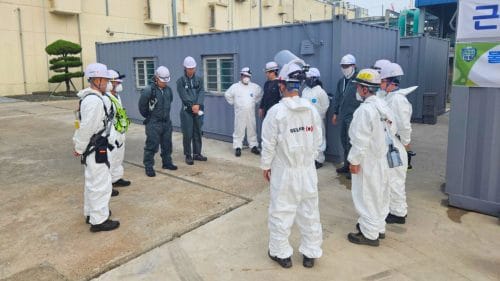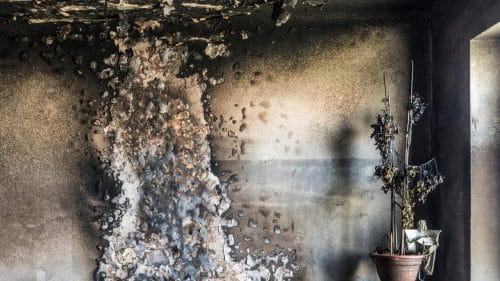After the Storm: First 24 Hours Checklist for Flooded Commercial Properties
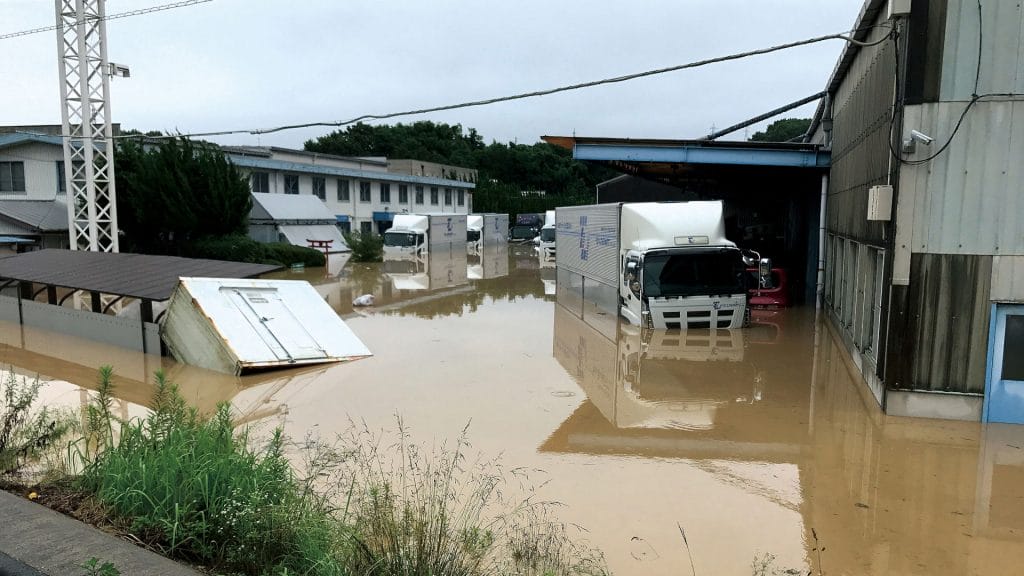
Key Takeaways
- Immediate safety checks are non-negotiable: Re-entering a flooded property without verifying structural and electrical safety can put lives at risk and complicate recovery.
- Early documentation supports smoother claims: Taking clear photos and videos of damage before cleanup begins provides critical evidence for insurance and recovery assessments.
- Quick action reduces long-term damage: Removing standing water and protecting assets within the first 24 hours helps prevent further deterioration and limits operational disruption.
- Professional support accelerates recovery: Engaging experienced recovery teams early ensures proper decontamination, moisture control, and technical guidance, all of which contribute to a more efficient restoration process.
Introduction
Flooding can cause immediate and wide-spread disruption to commercial properties. In Southeast Asia, recurring monsoon seasons bring heavier and more prolonged rainfall, increasing the risk of flash floods and water intrusion across urban and industrial areas. The first 24 hours following such an event are critical. Timely, well-informed decisions during this window can determine the scale of structural damage, the cost of restoration, and the speed at which business operations can safely resume. For commercial property owners and facility managers in Asia, a clear and structured cleanup checklist is essential for effective response.
This guide outlines the key actions to take immediately after a flooding incident. Each step is grounded in industry best practices, helping to stabilise the site, protect critical assets, and support a safe, efficient path to recovery.
Have Safety Risks Been Assessed Before Re-Entry?
Re-entering a flooded commercial property without proper clearance can pose serious hazards. Floodwater often compromises both structural and electrical systems, creating a high-risk environment. Potential dangers include:
- Live electrical currents from submerged systems or equipment
- Compromised structural elements such as floors, ceilings, or walls
- Contaminated water carrying biological or chemical risks
Access should remain restricted until the power supply is isolated and the building has been inspected by qualified personnel. Cleanup efforts should only proceed once the site is confirmed to be safe for entry.
Why Is It Important to Document Damage Before Cleanup?
While immediate action may seem urgent, pausing to record the extent of damage is a crucial first step. Capturing clear photographs and videos of affected areas can streamline claims processing and help the planning of the recovery process. Key elements to document include:
- Damaged interiors, furnishings, and materials
- Waterlines, staining, and areas of saturation
- Equipment, stock, or systems impacted by floodwater
- In some regions, you will also face wildlife intrusions such as snakes, spiders and even crocodiles.
This visual record supports insurance assessments and gives recovery teams the information they need to plan effectively. It also establishes a baseline for tracking storm restoration progress in accordance with your cleanup checklist and broader recovery protocols.
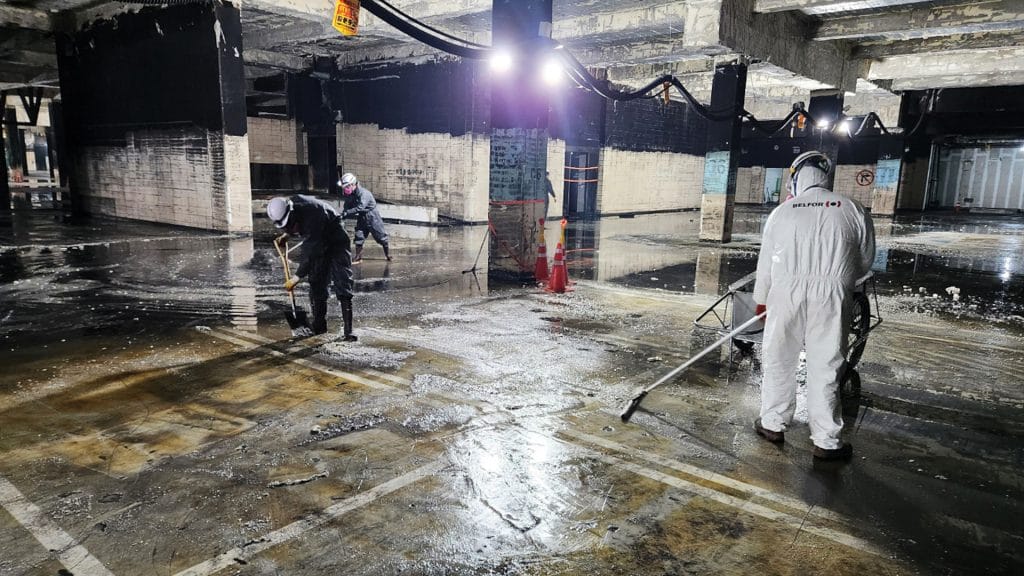
Is It Advisable to Begin Water Removal Internally?
In some situations, limited removal may be possible using portable equipment such as wet vacuums or submersible pumps. Early intervention can help reduce the risk of secondary damage, including mould growth and deterioration of moisture-sensitive materials.
Removing the water alone does not fix the problem because the contaminants carried by the water will remain on the surfaces, such as the floor, walls and furniture, amongst other surfaces. Following water extraction, quickly identify which furniture will be discarded and removed from the property, followed by rinsing with fresh clean water, on all affected surfaces within the building. After these steps, the rinsed water needs to be removed, and initial dying activities start. In parallel, the Damage Assessment to the building and other properties can start.
How Should High-Value Assets Be Protected After a Flood?
High-value assets which have not been directly affected by the water incident should be relocated to safe and dry area, where possible. Items which cannot be removed and were subject to water damage, mitigation works should be carried out. Items which cannot be removed and are not directly affected by water should be covered with plastic and protected against high humidity exposure, by using either dehumidifiers or desiccants.
A thorough cleanup checklist should account for smaller yet essential items, including employee records, backup drives, and temperature-sensitive materials. Even brief exposure to moisture can lead to data loss, equipment failure, or costly operational setbacks. Prioritising asset protection in the early stages helps minimise downstream disruption.
Why Is Early Engagement with Recovery Professionals Essential?
Once the site is stabilised and immediate risks are under control, involving a qualified recovery team should be the next step. Professional disaster restoration companies like BELFOR, provide more than equipment. They deliver technical expertise, rapid response, and the experience to identify and address emerging risks before they escalate.
A structured cleanup checklist is most effective when guided by experienced professionals. Partnering with a provider like BELFOR ensures accurate assessment, including moisture mapping, microbial testing, structural drying, and targeted decontamination. Early intervention not only reduces downtime but also supports a more efficient claims process.
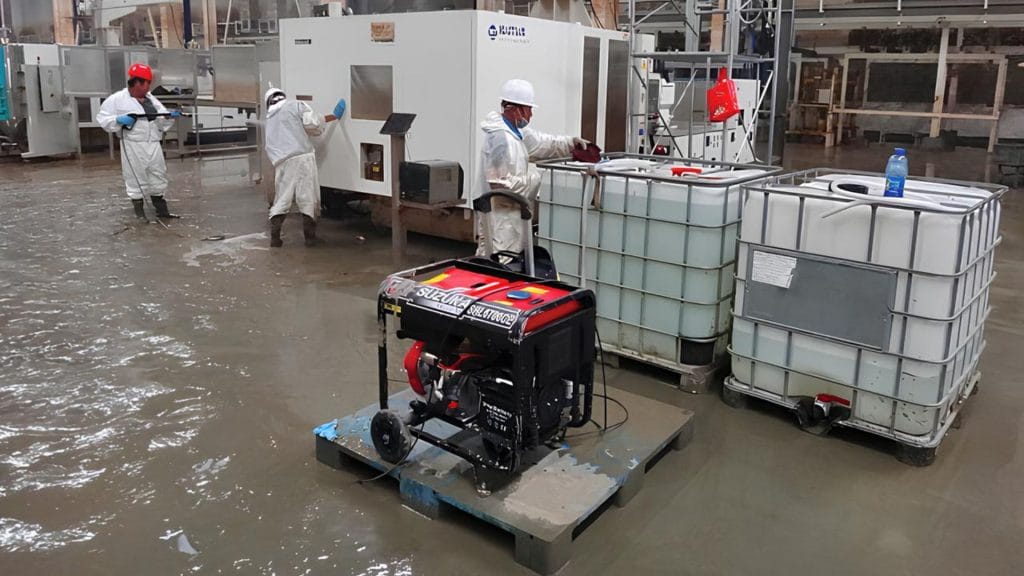
Preparedness Drives Effective Recovery
Flooding can cause significant disruption, but with a clear and practical cleanup checklist, businesses can take swift, structured action in the first 24 hours to limit long-term impact.
BELFOR delivers rapid mobilisation and comprehensive recovery services. Our teams specialise in water removal, site stabilisation, and full-scale restoration tailored to commercial and industrial environments.
Contact us today to explore how we can support your recovery objectives.
